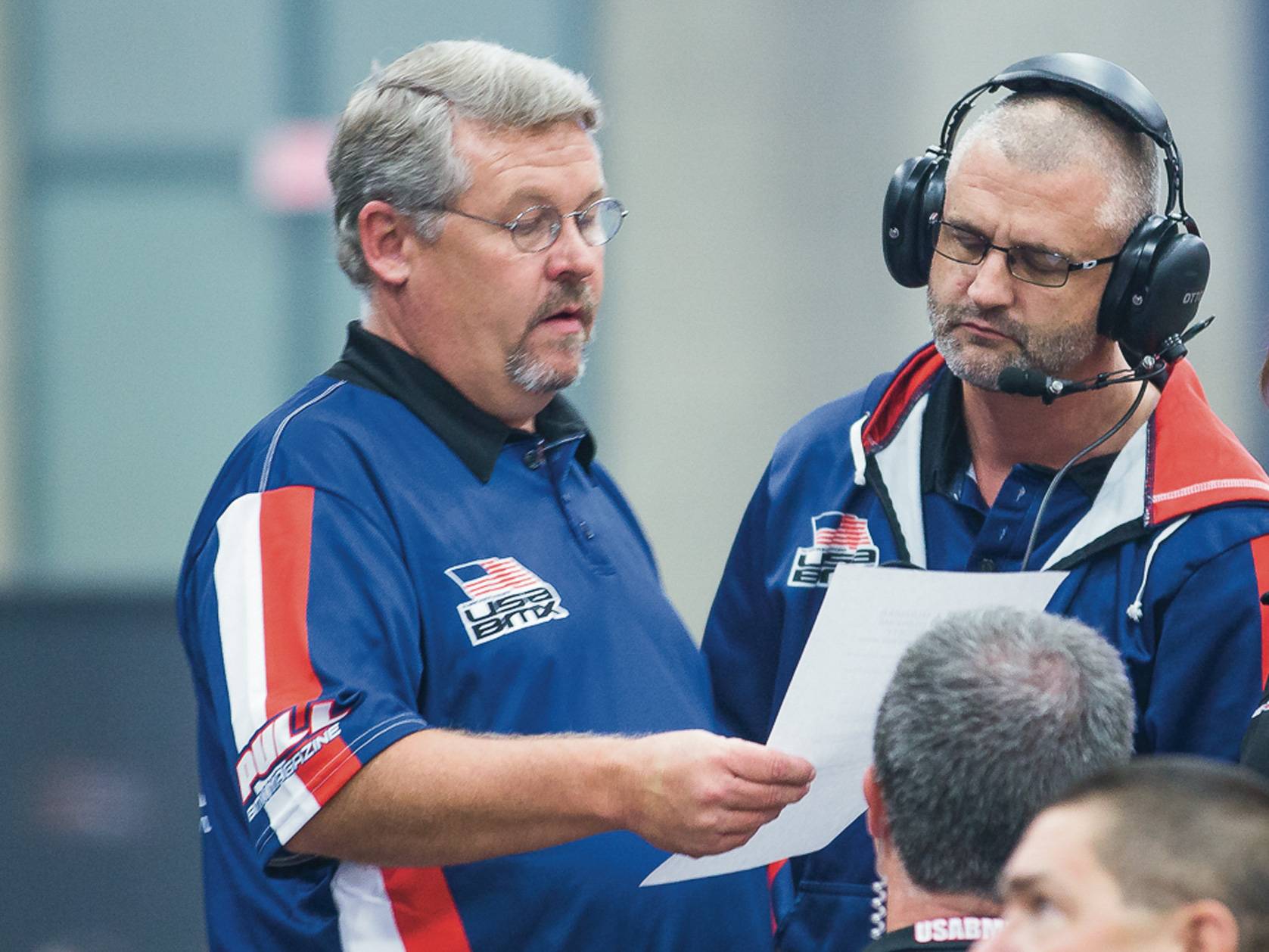
The business of BMX
By Benjamine Gleisser
Bernard Anderson is riding high with 70,000+ members of the bicycle racing organization
Bernard Anderson spent 11 days last summer in Rock Hill, South Carolina, watching the world’s best bicycle motocross (BMX) riders race over hilly tracks at speeds that make cheetahs look like they’re running backward. While these racers were competing for trophies, you can bet many of them were dreaming about winning Olympic gold.
Anderson (B.B.A. ’93) is chief executive officer of USA BMX and serves as the BMX committee representative on the Team USA Cycling board of directors. Though he won’t be selecting who goes to Tokyo to compete in the 2020 Summer Olympics, his Arizona-based organization provides the facilities on which American cycling athletes train.
USA BMX — formerly known as the American Bicycle Association — has more than 70,000 members and oversees 380 race tracks in North America. In 2003, BMX racing became a sanctioned Olympic sport. BMX racing has evolved over the years, especially at the track level. Previously, the 1,100-foot track had three turns, no berms, and one major jump hill. Today, the track has berms, steep turns, and can contain 45 to 50 smaller jumps.
Anderson has been racing since he was 6 years old. "When I was a kid, I told my dad I wanted a motorcycle. He said, ‘No way am I buying you a motorcycle,’ " Anderson says with a laugh. "In 1975, I was watching a kids program and saw BMX, and said, ‘Hey, Dad, I want to race BMX.’ He handed me the Yellow Pages and said, ‘Figure out where you can race.’ "
A local Schwinn bicycle store sponsored yearly races, and Anderson began riding his bicycle over dirt hills in a nearby field. The feel of sending his two-wheeler into the air was exhilarating. "Racing was in my blood," he says. "Both my parents were drag racers in San Antonio. My father, Bernie, was an entrepreneur and in 1978, he opened Lone Star BMX track. He later owned six tracks in the area."
The American Bicycle Association was founded in 1977 in Chandler, Arizona. Bernie Anderson bought the organization in 1985 and intimated to his son that the teenager might someday head the group — but there was one stipulation. "He thought I needed a college degree," Anderson says. "So I enrolled at Texas State, and what I learned about business and creating a marketing plan I carry with me today. I learned how to launch a brand, and I carried that information directly into my business."
Texas State also provided him with a great bicycling partner — his wife, Amy (B.A. ’93), who majored in psychology. The couple has two children, sons Gavin and Shane. Another Bobcat in the family is Anderson’s sister Debbie Baldwin, who graduated in 1977 with a bachelor’s in education.
Following graduation, Anderson moved to Arizona and began working in the business. "I started at the bottom of the company and worked up through the ranks," he says.
In addition to his duties at USA BMX, Anderson serves as chairman of the board for the USA BMX Foundation, which manages the National BMX Hall of Fame, the USA BMX Race for Life, and the Bob Warnicke Memorial Scholarship. The Race for Life donates more than $250,000 a year to the Leukemia Lymphoma Society of America. The Race for Life was started in 1979 by the son of a BMX track operator in Michigan.
"He was a 10-year-old kid who told his father he wanted to do a fundraiser for other kids like him who had leukemia," Anderson says. "The BMX sanctioning body took the fundraiser nationwide." The Warnicke Memorial Scholarship was named for a former USA BMX marketing manager who died from leukemia at the age of 48. In 2016, the scholarship program awarded $47,500 to 78 students with BMX backgrounds.
Though Anderson doesn’t race as often as he did when he was a child, he tries to make USA BMX as kid-friendly as possible. "I never forget how infatuated and excited I was the first time I went to the American Bicycle Association office as a young racer," he says. "I try to instill that same feeling in the office today. There are lots of memorabilia on the walls.
"And I love watching young parents experiencing that with their kids. It never gets old — giving a 5-year-old a trophy." ✪